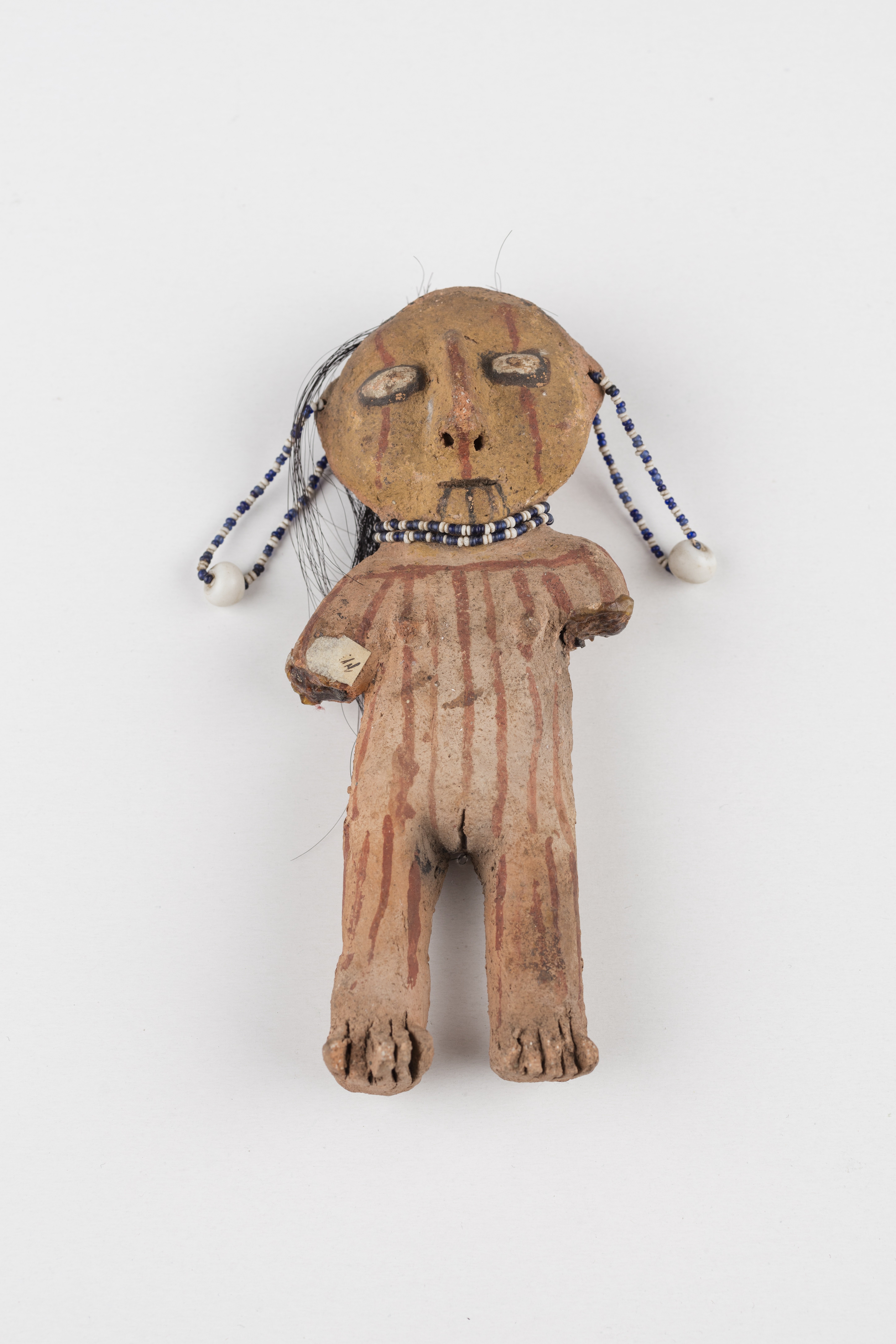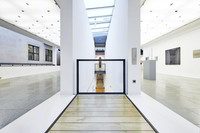A female figure from unfired clay that is painted with red vertical stripes. The outsized eyes are built through light ridges and a black and white painting. The chin is painted with four black stipes. The nose and the breasts are shaped sculpturally. Vulva and toes emerged from indentation. At the ears and around the neck the figure wears rings resp. a necklace from pearls. At the back of the head, hair from black horse hair tufts is stuck on.
The figure probably comes from the Mohave people in the southwest of the USA, a tribe of the Yuma that lives in the territory of the lower course of the Colorado River in Arizona, California and Nevada. In the 19th and 20th century, the Mohave adjusted their pottery tradition to the market that arose from the Euro-American tourism. Apart from utilitarian pottery especially such figures resp. dolls were produced for selling to tourists. Usually besides pearl necklaces and rings that were worn as well by the female as by the male figures traditional clothing was manufactured for the dolls, too.
de

